Disputes and consequences: DPICM shells for Ukraine
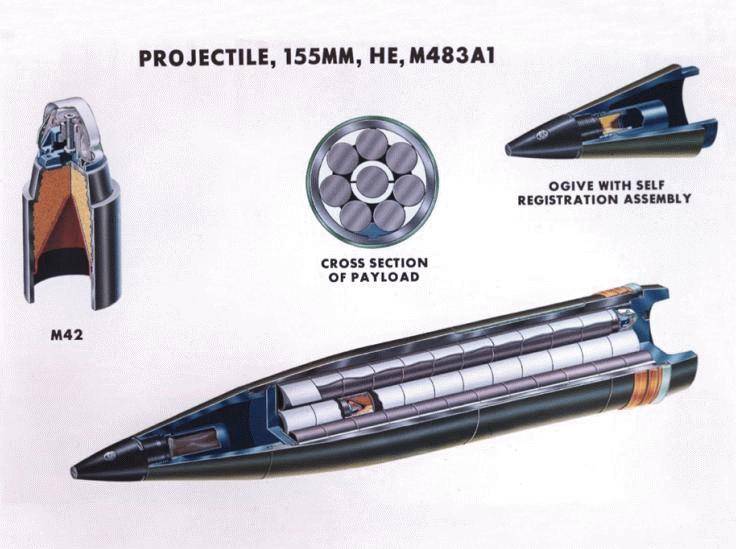
M483A1 projectile and M42 combat element
Since last year, the Kiev regime has been begging foreign partners for cluster munitions. Some countries have decided to supply such weapons, while others refused or continue to discuss this issue. For example, in the United States, they have been trying for several months to decide whether it is possible to send shells with equipment of the DPICM type to Ukraine. The disputes ended with a predictable result - cluster munitions for artillery will be included in the next package of military-technical assistance.
Requests and deliveries
Requests for the provision of cluster munitions, incl. artillery shells of the DPICM family, sounded last fall and were sent primarily to the United States. For several months, the American leadership did not make a positive decision and did not allow the shipment of such products, although there was no direct refusal.
However, the Kiev regime has already managed to find the necessary ammunition in other countries. So, in early January, the American media reported that a batch of American-designed M483A1 DPICM cluster shells was delivered to Ukraine from Turkey. Wherein news did not have worthy evidence and was quickly forgotten. However, a few months later it turned out that M483A1 products did appear in the Ukrainian arsenals. Apparently, these were ammunition from the previously disclosed Turkish supply.
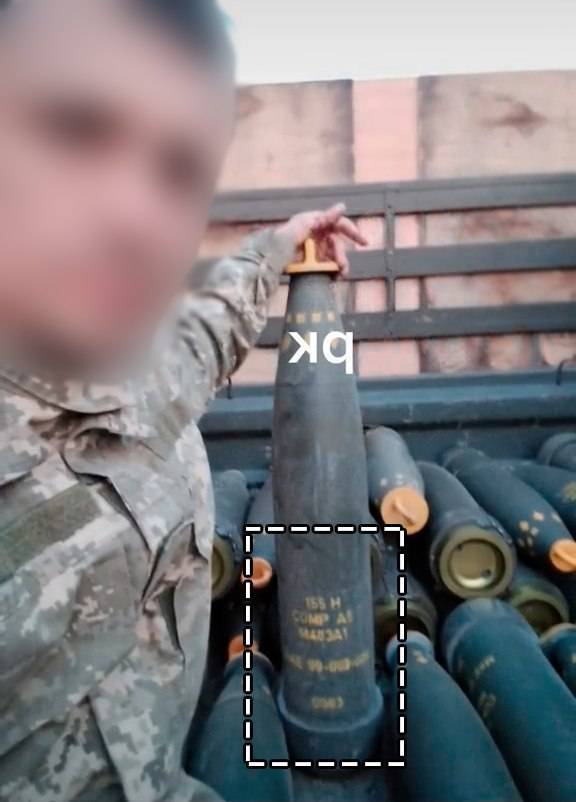
Product M483A1 in Ukraine
This year it became known that Kyiv has another type of ammunition from the DPICM line. Israeli-made M971 mortar rounds armed with American M80 submunitions appeared in photos from the war zone. When and how these mines came to Ukraine is unknown, but there is reason for certain suspicions.
Disputes ended
Having received foreign DPICM products, the Kiev regime continued to wait for the supply of similar weapons from the United States. However, Washington was in no hurry to allocate such assistance. The official reasons for this were the current legislative restrictions and the unwillingness to contribute to the escalation of hostilities. However, over the past few months, a number of congressmen have demanded the lifting or circumvention of previously imposed restrictions and the start of deliveries - and faced opposition from other lawmakers.
The legal side of this situation is quite simple. The US is not a party to the Cluster Munitions Convention and reserves the right to manufacture, possess and use them. However, in the past, the US has made a commitment not to export low-reliability cluster warheads that fail more than 1% of their warheads. For DPICM submunitions, according to various estimates, this parameter exceeds 2-3 percent. (there are also higher estimates), and they do not fit into the existing restrictions.
In recent days, in the American press, citing unnamed government officials, several publications have reported that the White House has nevertheless agreed to send cluster shells to Ukraine. Finally, on July 7, this information was officially confirmed by the Pentagon. A department spokesman said that the new assistance package will include 155-mm DPICM shells. The exact model and quantity are not named.
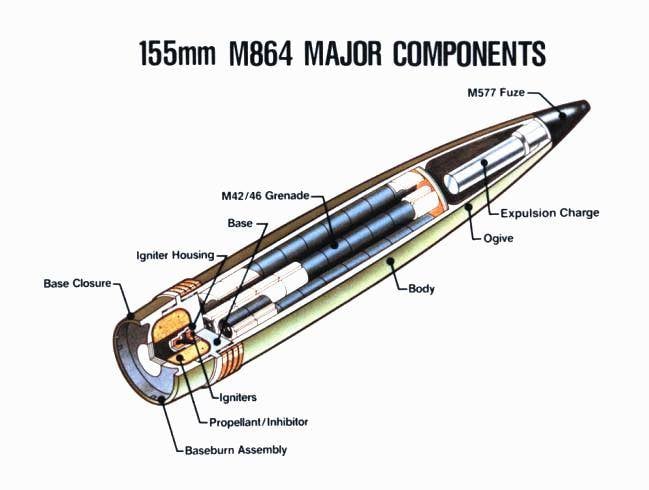
Active Rocket M864
Ammunition double action
The development of the first elements of the future DPICM (Dual-Purposed Improved Conventional Munition) ammunition family began back in the fifties, but the desired results were obtained only by the beginning of the seventies. Then the first cluster projectile of the new line entered service, and other ammunition followed.
The basis of the DPICM family are the combat elements M42, M46, M77, etc. These are compact lightweight ammunition designed to fit in a cassette. All of them have a cylindrical body and a ribbon parachute for orientation when falling. A cumulative fragmentation charge is placed inside the case. The dual purpose / action from the name of the project is expressed in the ability to hit armored objects and manpower. Late family ammunition and previously upgraded ones are equipped with a self-liquidator.
DPICM submunitions can be used with different delivery systems. So, the 155-mm artillery shell M483 (A1) appeared first. It was possible to place 64 small M42 elements and 24 larger M46 elements in a standard-sized case. In terms of firing range, the M483 of both versions did not differ from standard near-high-explosive projectiles.
In the eighties, based on the M483, they developed the M864 active-reactive ammunition. The installation of a gas generator led to a reduction in the available volume inside the projectile and to a decrease in the number of M42 elements to 48 pieces. At the same time, the flight range increased to 30 km.
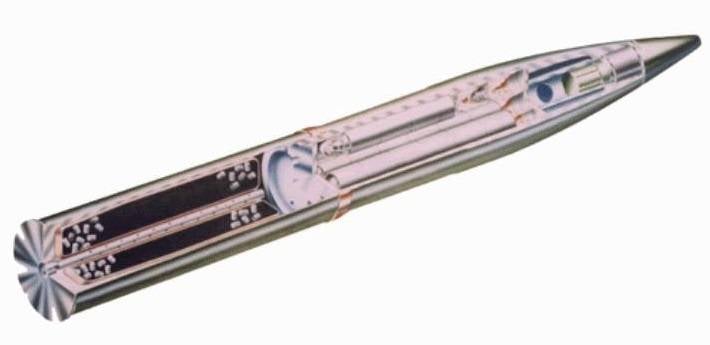
105 mm unitary round with M915/916 projectile
There is a line of similar ammunition for 105 mm guns. Now it is based on the M915 and M916 shells, equipped with 42 M80 elements. Firing range - up to 14 km.
DPICM products have also found application in rocket artillery. The first line of MFOM missiles for the M270 MLRS MLRS included the M26 projectile. It managed to place 644 M77 ammunition. The M30 missile from the modern GMLRS family carries the newer M101 submunitions in the amount of 404 units. However, such products are no longer available in the United States. The unguided M26s were written off due to obsolescence, and the M30s are being redesigned with the installation of a monoblock warhead.
Threats and answers
In general, cluster munitions of the DPICM family are typical representatives of their class and have all the characteristic advantages. The appearance of such products in the Ukrainian artillery poses certain threats to our troops, civilians and civilian infrastructure. At the same time, cluster projectiles and their equipment are not without drawbacks, and there are a number of other factors that reduce their overall effectiveness.
The United States plans to send DPICM products in 155 mm caliber to Ukraine. Earlier, the Kiev regime received several hundred self-propelled and towed artillery systems of this caliber, but a significant proportion of them were destroyed. The remaining guns will be able to use cluster shells.
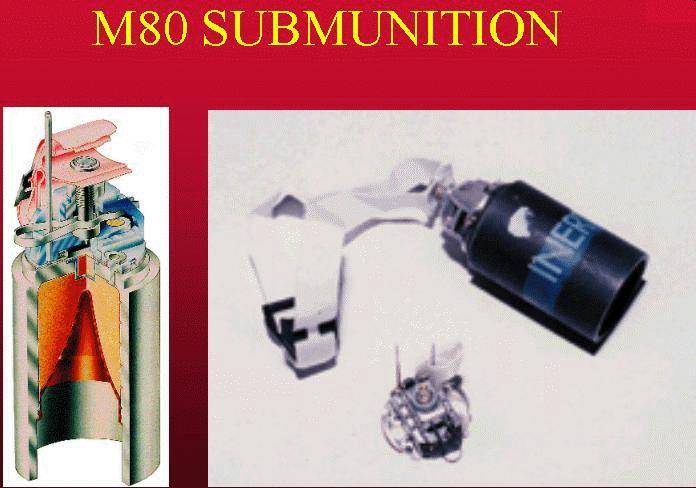
Submunition M80
The main advantage of a cluster munition lies in its ability to hit targets in a certain area. So, 155-mm projectiles, when deployed, scatter DPICM submunitions within a radius of tens of meters. At the same time, each submunition, when detonated, scatters fragments around itself, and with a direct hit, it can hit an armored object or other target with a cumulative jet.
However, products of the DPCIM family are not very reliable. According to official data, 2-3 percent do not work. submunitions. According to other estimates, at least 20-30 percent of the dead remains lying at the site of the shelling. elements. This means that the real combat capabilities of the projectile and its load are much lower than the calculated ones. The risk of shelling to troops or the population is reduced accordingly - although the remaining combat elements still pose a threat.
It is not difficult to understand how the Russian army will respond to the appearance of DPICM cluster shells in the enemy. First of all, the fight against the logistics of Ukrainian formations will be intensified. By locating and destroying a vehicle or storage location, it is possible to prevent the use of projectiles and their negative consequences. In addition, the process of searching for and destroying artillery firing positions, together with guns and ammunition, retains great importance.
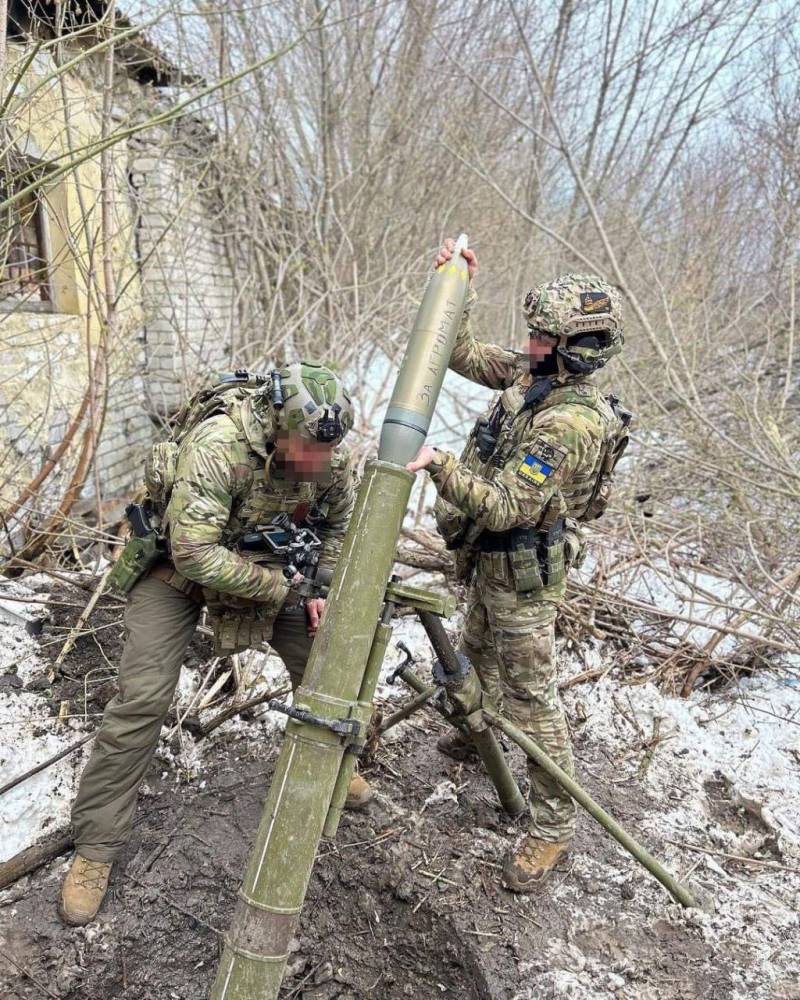
Ukrainian mortars use M971 DPICM ammunition
The Russian army has a variety of reconnaissance equipment and strike systems with which such tasks can be solved. At the same time, our military regularly confirms the possibility and ability to prevent enemy shipments, destroy missile and artillery weapons depots and destroy artillery.
A certain proportion of the shells will still be delivered to the front and used. In this case, our army will use all the accumulated experience of counter-battery combat to prevent artillery strikes or stop firing that has already begun. If the enemy has time to release shells, then a high percentage of unexploded submunitions will add work to sappers. The safety of the population and troops will depend on their work.
Decision is made
Thus, the disputes over the supply of cluster artillery shells to Ukraine are over. Official Washington has determined its position and includes such ammunition in the new aid package. Real deliveries can begin in the very near future - as before, the shells will be taken from the warehouses of our own army.
The consequences of these events are clear. Ukrainian artillery will receive American shells and will begin to use them in settlements - there they will be able to inflict the greatest damage. The Russian army will have to take appropriate measures, and it is obvious that they will be extremely painful for the enemy. At the same time, the Kyiv regime should not hope that the new projectiles will change its prospects and fate.
Information